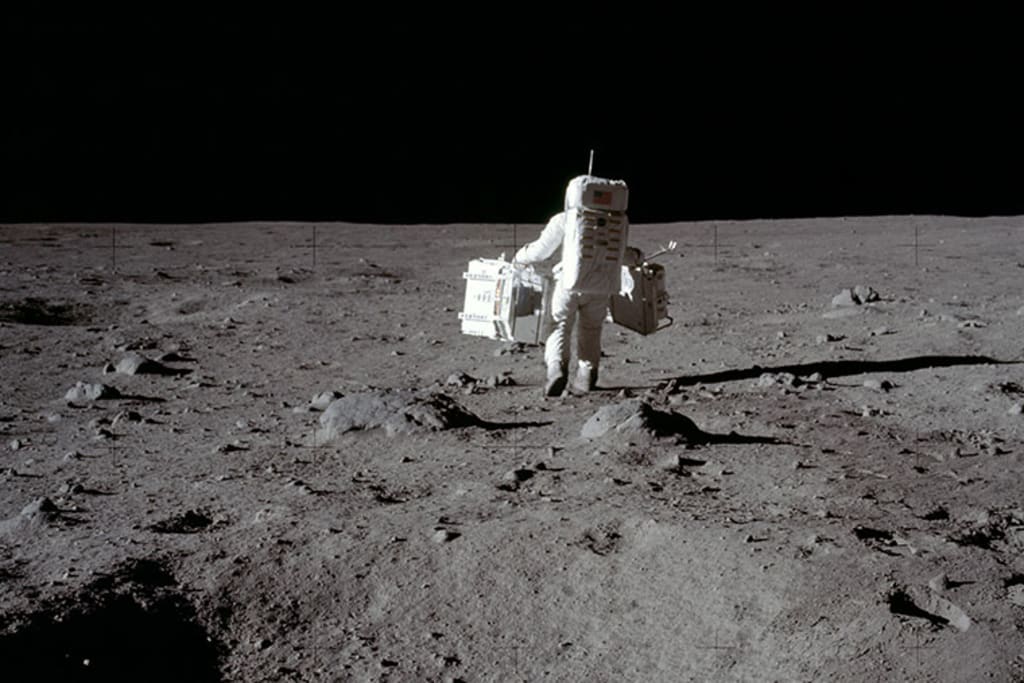Lunar Resource Utilization
Tapping into the Moon's Potential.

The moon, our closest celestial neighbor, holds a wealth of resources that can be harnessed for various purposes. Lunar resource utilization has the potential to revolutionize space exploration, enable sustainable lunar settlements, and even provide valuable resources for use on Earth. In this article, we will investigate the potential resources available on the moon and explore how they can be utilized.
One of the most significant resources on the moon is water ice, which has been detected in the permanently shadowed regions near the lunar poles. Extracting water ice from these regions could provide a crucial resource for sustaining human presence on the moon. Water can be used for life support systems, providing drinking water, and growing crops for food production. It can also be broken down into its constituent elements, hydrogen and oxygen, to produce rocket propellant for fueling spacecraft, enabling the moon to become a refueling station for deep space missions. By utilizing lunar water resources, the dependence on Earth for essential supplies can be significantly reduced.
In addition to water, the moon is rich in valuable minerals that have commercial and scientific importance. Minerals such as iron, aluminum, titanium, and rare earth elements are abundant on the lunar surface. These minerals can be extracted and processed for use in construction, manufacturing, and even future space missions. By mining these resources on the moon, the need for transporting heavy and costly materials from Earth can be minimized, making space exploration and lunar settlements more economically feasible.
Another intriguing resource on the moon is helium-3, a rare isotope that is scarce on Earth but believed to be abundant on the lunar surface. Helium-3 has potential as a fuel for nuclear fusion, a clean and highly efficient energy source that could revolutionize power generation on Earth. Fusion reactors utilizing helium-3 could provide abundant energy without the harmful byproducts associated with traditional nuclear fission reactors. While the technology to harness helium-3 for fusion energy is still in development, the moon's potential as a future source of this valuable isotope sparks excitement and possibilities for clean and sustainable energy solutions.
The utilization of lunar resources presents several challenges that need to be addressed. Establishing mining operations and resource extraction techniques on the moon will require advanced robotics, automation, and innovative drilling technologies. The harsh lunar environment, including extreme temperatures and abrasive lunar regolith, presents engineering challenges that need to be overcome. Additionally, the legal and ethical considerations surrounding lunar resource utilization require international collaboration and clear guidelines to ensure responsible and sustainable practices.
However, the benefits of lunar resource utilization are significant. By leveraging the resources available on the moon, we can establish self-sustaining lunar settlements, enable deep space exploration, and reduce the cost and environmental impact of space missions. Moreover, the technological advancements developed for lunar resource extraction and processing can have spin-off benefits for various industries on Earth, driving innovation and economic growth.
It is important to note that lunar resource utilization should be pursued with responsible stewardship. Conservation efforts must be in place to minimize environmental impact and preserve the moon's scientific and historical heritage. Balancing resource extraction with the preservation of lunar sites, such as the Apollo landing sites, ensures that future generations can continue to appreciate the significance of lunar exploration.
In conclusion, lunar resource utilization holds immense potential for advancing space exploration and sustainable development. From extracting water ice for life support systems and fuel production to mining valuable minerals and potentially harnessing helium-3 for fusion energy, the moon offers a treasure trove of resources waiting to be tapped. By harnessing these resources, we can pave the way for a future where human activities on the moon are sustained, space missions are fueled, and clean energy solutions are realized.
About the Creator
Enjoyed the story? Support the Creator.
Subscribe for free to receive all their stories in your feed. You could also pledge your support or give them a one-off tip, letting them know you appreciate their work.





Comments
There are no comments for this story
Be the first to respond and start the conversation.